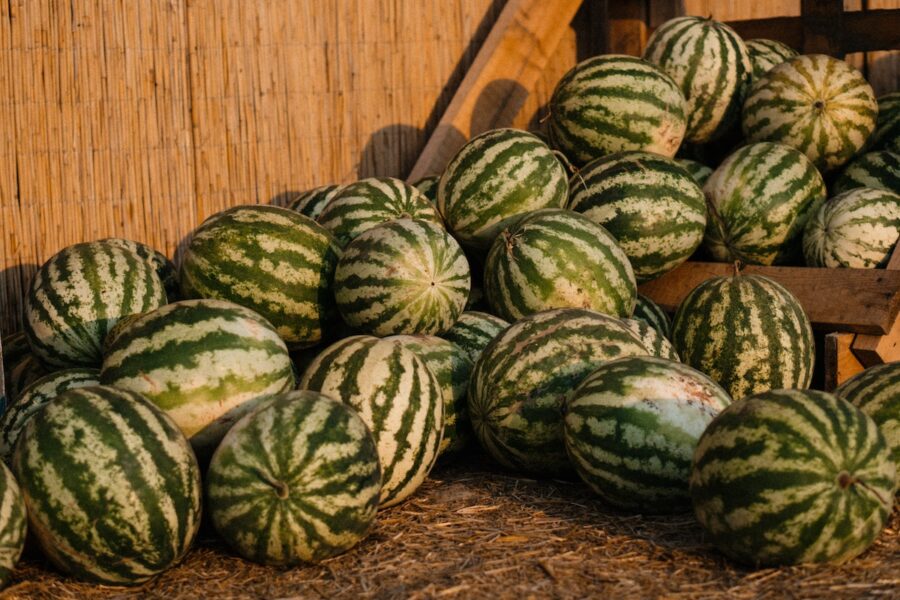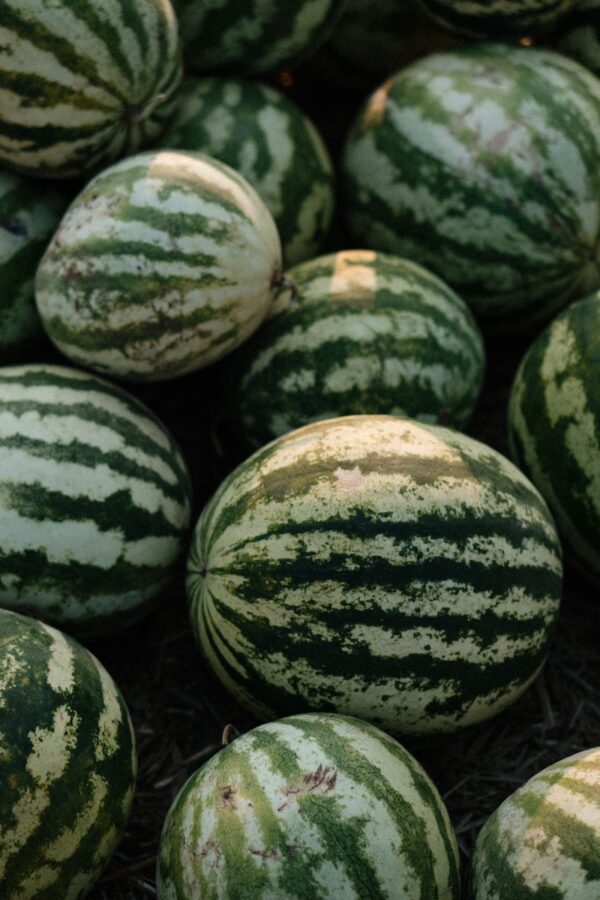Point of view: You visit a farmer’s market to purchase a juicy, refreshing watermelon. Your antics tell you that it is ripe, but when you come home and slice it through, you witness boring, pale, and premature flesh shining through. What a bummer!
This article will introduce you to the subtle art of sidelining unripe watermelons so that you can get your hands on the best watermelons in the store.
You are less likely to meet an unripe melon at a farmer’s market since the vendors only put forth produce worth the bucks. However, the situation seems to change at a grocery store where you encounter watermelons of all shapes and sizes.
Decisions, decisions!
After going through our brief, you will never miss a mouthwatering, juicy, and of course, ripe watermelon.
Table of Contents
How to Check Whether a Watermelon is Ripe or not
Simply follow these steps to ensure the right pick every time. You may not be able to tick every box from the features mentioned below; this does not necessarily mean that the watermelon is unripe.
If you get a majority of these features in a watermelon, your chances of picking a ripe watermelon become more probable.
1. Assess the watermelon’s weight by picking it up
Go for larger watermelons. If you come across two watermelons of the same size, pick them both up in either hand to assess their heaviness.
Always go for the heavier one; the chances are that this one has developed a more succulent, thick flesh to justify its weight.
Even though this isn’t the most reliable test out there, it brings you one step closer to a ripe melon!
2. Locate a yellow spot on the belly

A friend of mine thought that watermelons grow on trees! If you’re someone who’s still mistaken like her, your secret’s safe with me! It’s time to get your facts straight: Watermelons grow on ground-level sprawling vines.
The belly is the part of the watermelon that remains in contact with the ground. Since it does not receive much light, it lacks the green watermelon-ish (I know that’s not a word) color and appears pale or yellow. This pale or yellow area is known as the field spot.
The field spot is an apt indicator of how sweet a watermelon is. If it’s pale or white – it means that it had been harvested a bit too early.
Yellow field spots are indicative of ample sugar content in watermelons. Always go for watermelons with yellow field spots.
3. Locate the brown sugar spot
If you spot a brown spot or patch/patches on your chosen watermelon, don’t confuse it with dirt. These brown spots depict the point where the sugar content of the melon seeps out.
You might have missed out on some juicy, sweet watermelons if you thought these sugar spots were just nasty grime!
4. Tap/spank/thump the watermelon

Yes, it’s time to channel your aggression! Just kidding!
You just need to knock on the watermelon from your knuckles to check for the sound quality. If the sound is resonant, it is indicative of hollow content that houses bursting, fresh watermelon juice.
A dull sound is telling you that the watermelon is not yet ripe.
5. Choose watermelons in uniform shapes and sizes
Does this count as body shaming? I hope not! Real beauty lies on the inside, but unfortunately, this doesn’t apply to watermelons.
Non-uniform, bumpy, and irregular watermelons taste nasty and depict cultivators’ neglect during the growth period – time to pass them on!
6. Do not choose shiny watermelons

All that glitters is not gold, especially in the case of watermelons. Go for the dull, lack-luster watermelons; their gleam-deprived look suggests that these watermelons spent more time maturing in the ground.
7. Green Stem
This point is only valid if a piece of the stem is still intact to the head of the watermelon. A firm, green stem indicates recent, fresh harvest.
A brown one is indicative of an aged watermelon.
Ask Away: The FAQ Section

2-4 watermelons grow on a single vine.
It takes a watermelon around 3 months or more to mature on a vine.
The cantaloupe and honeydew melons are rich in antioxidants, making them front runners amongst other melons in the family.

